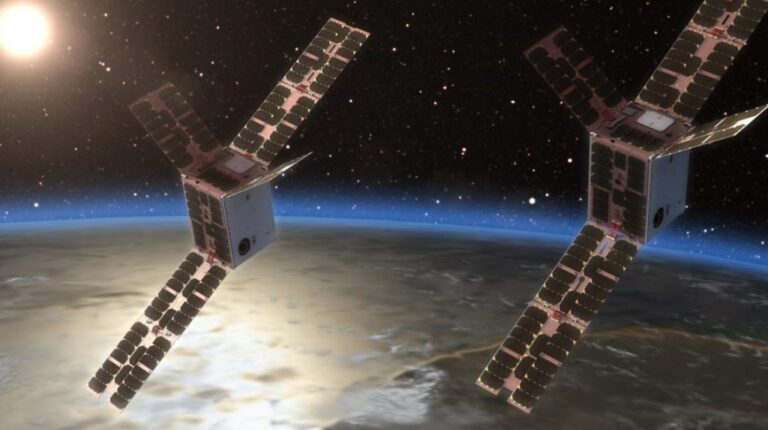Space weather sensors developed at the University of Bath will be launched into orbit as part of the £5.15m (US$7.08m) Orpheus mission, which is set to launch in 2027.
The TOPCAT II satellite payload, created to take measurements of atmospheric conditions in space to inform improvements to technologies including GPS, were created by Dr Robert Watson and Professor Cathryn Mitchell in Bath’s Department of Electronic & Electrical Engineering.
TOPCAT (Topside ionosphere Computer Assisted Tomography) will monitor Earth’s upper atmosphere to better understand space weather and help improve GPS and communications technology.
Prof. Mitchell said, “This is an exciting opportunity for us to have our space weather instrument on a satellite and to use the data in the University of Bath MIDAS imaging data assimilation, an advanced algorithm that gives us a highly accurate three-dimensional image of the Earth’s ionosphere and its evolution in time. Orpheus will have a major impact on the UK’s capability in space weather.”
Better understanding of space weather
The Orpheus mission, which was awarded to Astroscale UK on June 16 by Defence Science and Technology Laboratory (Dstl), is a successor to the Prometheus-2 and CIRCE missions, in which the first TOPCAT satellite payload took part, that were lost onboard the Virgin Orbit launch in 2023.
The TOPCAT II payload carries an advanced multi-frequency GPS receiver to estimate the total electron content of the ionosphere. This will give scientists and engineers new data that will enable them to better understand space weather phenomena and help design resilient future satellites.
Dstl chief executive Dr Paul Hollinshead said, “Changes in space weather can have a critical impact on satellites which provide navigation aids, telecommunications and data transmission. Sustained investment in space research in collaboration with our international partners strengthens the security of UK interests in space.”
The suite of payloads carried on Orpheus will generate observations enabling a greater understanding of the driving processes of geophysical phenomena in the ionosphere-thermosphere system, distributed across a wide range of latitudes.
Understanding the characteristics of the dynamic ionosphere is vital for a range of both civil and defense applications, such as the global navigation satellite system, communications, sensing technology and space sustainability.
The fully funded project will run for three years and will conclude in 2028. It will cover the complete lifecycle of the mission, from design through to launch, operations and disposal.



